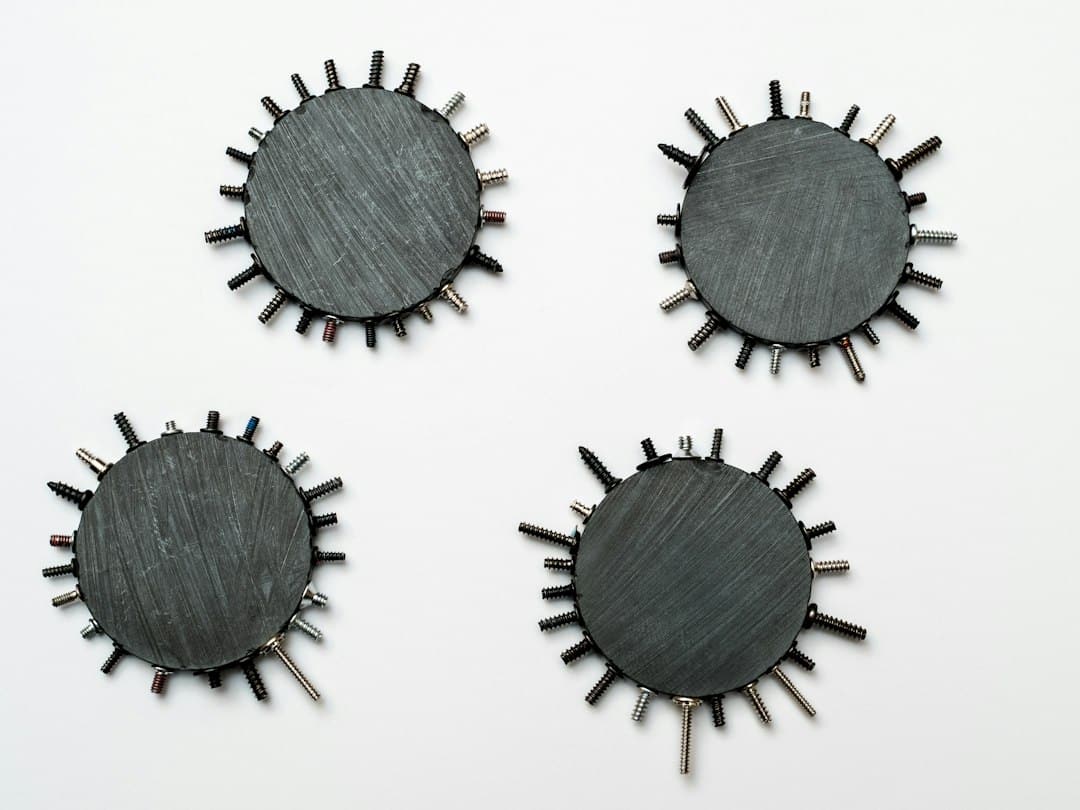Understanding termite damage and how it can affect your home is crucial for homeowners. Termites are small insects that feed on wood and can cause significant damage to the structure of a building if left untreated. This article will provide a comprehensive overview of termite damage, including the different types of termites, signs of infestation, repair strategies, prevention methods, and the cost of repairs. By understanding these factors, homeowners can take proactive steps to protect their homes from termite damage.
Contents
- 1 Understanding the Threat of Termite Damage: What You Need to Know
- 2 The Signs of Termite Infestation: How to Identify and Confirm the Problem
- 3 The Different Types of Termites: Which Ones Are Invading Your Home?
- 4 The Risks of Ignoring Termite Damage: Why You Need to Act Fast
- 5 Effective Termite Repair Strategies: How to Restore Your Home
- 6 DIY Termite Repair Tips: Can You Fix the Damage Yourself?
- 7 Hiring a Professional Termite Repair Service: What to Look for
- 8 Preventing Future Termite Infestations: How to Protect Your Home
- 9 The Cost of Termite Damage Repair: What to Expect
- 10 Termite Insurance Coverage: Does Your Policy Include Repair Costs?
Key Takeaways
- Termite damage can be a serious threat to your home and should not be ignored.
- Signs of termite infestation include mud tubes, discarded wings, and hollow-sounding wood.
- There are different types of termites, including subterranean, drywood, and dampwood.
- Ignoring termite damage can lead to structural damage and costly repairs.
- Effective termite repair strategies include replacing damaged wood and treating the area with pesticides.
Understanding the Threat of Termite Damage: What You Need to Know
Termites are small insects that live in colonies and feed on cellulose-based materials, such as wood. They can cause extensive damage to a home’s structure by eating through wooden beams, walls, and floors. The damage caused by termites is often not immediately visible, as they tend to eat wood from the inside out. This means that by the time signs of infestation become apparent, significant damage may have already occurred.
There are different types of termites, including subterranean termites, drywood termites, and dampwood termites. Subterranean termites are the most common type and live in underground colonies. They build mud tubes to travel between their nests and food sources. Drywood termites, on the other hand, do not require contact with soil and can infest dry wood found in homes. Dampwood termites are attracted to moist wood and are typically found in areas with high humidity.
The risks associated with termite damage are significant. If left untreated, termites can weaken the structural integrity of a building, leading to costly repairs and potential safety hazards. Additionally, termite infestations can go unnoticed for long periods of time, allowing the colony to grow and cause more damage. It is important for homeowners to be aware of the signs of termite infestation and take action promptly to prevent further damage.
The Signs of Termite Infestation: How to Identify and Confirm the Problem
There are several signs that may indicate a termite infestation in your home. These include:
1. Wood damage: Termites feed on wood from the inside out, leaving behind hollowed-out or damaged wood. Look for signs of sagging floors, hollow-sounding wood, or visible tunnels in wooden structures.
2. Mud tubes: Subterranean termites build mud tubes to travel between their nests and food sources. These tubes are typically found along the foundation of a building or on walls.
3. Discarded wings: After swarming, termites shed their wings. Finding discarded wings near windowsills or other entry points may indicate a termite infestation.
4. Frass: Drywood termites produce tiny pellets called frass, which they push out of their tunnels. Look for small piles of frass near wooden structures.
To confirm the presence of termites, it is recommended to contact a professional pest control company for an inspection. They will be able to identify the type of termite and assess the extent of the infestation. Acting quickly is crucial to prevent further damage and minimize repair costs.
The Different Types of Termites: Which Ones Are Invading Your Home?
| Type of Termite | Description | Location | Damage |
|---|---|---|---|
| Subterranean Termites | Live in underground colonies and build mud tubes to access above-ground food sources. | Found throughout the United States. | Can cause extensive damage to homes and other wooden structures. |
| Dampwood Termites | Prefer to live in damp and decaying wood, often found in areas with high moisture levels. | Found in coastal regions and areas with high humidity. | Can cause significant damage to homes and other wooden structures. |
| Drywood Termites | Live in dry wood and do not require contact with soil or moisture. | Found in warm, coastal regions. | Can cause significant damage to homes and other wooden structures. |
| Conehead Termites | Named for their cone-shaped heads, these termites build nests above ground and do not require contact with soil. | Found in Florida and the Caribbean. | Can cause significant damage to homes and other wooden structures. |
As mentioned earlier, there are different types of termites that can invade your home. Understanding the characteristics of each type can help in identifying and treating the infestation effectively.
Subterranean termites are the most common type found in homes. They live in underground colonies and build mud tubes to travel between their nests and food sources. These termites require contact with soil and are attracted to moisture. They can cause significant damage to wooden structures and are often found in areas with high humidity.
Drywood termites, as the name suggests, infest dry wood found in homes. Unlike subterranean termites, they do not require contact with soil. Drywood termites can be more difficult to detect, as they do not build mud tubes. They can infest wooden furniture, walls, and floors, and their presence is often indicated by the presence of frass.
Dampwood termites are attracted to moist wood and are typically found in areas with high humidity. They infest decaying wood and are less likely to cause damage to structures in good condition. However, if there is a moisture problem in your home, dampwood termites can become a concern.
The specific type of termite invading your home will determine the most effective treatment method. It is important to identify the type of termite through a professional inspection to ensure proper treatment.
The Risks of Ignoring Termite Damage: Why You Need to Act Fast
Ignoring termite damage can have serious consequences for your home. Termites can weaken the structural integrity of a building by eating through wooden beams, walls, and floors. Over time, this can lead to sagging floors, warped walls, and even collapse in severe cases.
In addition to the immediate structural risks, termite damage can also have long-term effects on your home. If left untreated, termites can continue to multiply and cause further damage. This can result in higher repair costs and potential safety hazards.
Furthermore, termite infestations can go unnoticed for long periods of time. Termites are often active inside walls or other hidden areas, making it difficult to detect their presence. By the time signs of infestation become apparent, significant damage may have already occurred.
It is crucial to take action as soon as you suspect a termite infestation in your home. Contacting a professional pest control company for an inspection and treatment is the best course of action to prevent further damage and protect your investment.
Effective Termite Repair Strategies: How to Restore Your Home
Once a termite infestation has been treated, it is important to repair the damage to restore your home’s structural integrity. There are several strategies for repairing termite damage, each with its own pros and cons.
One common approach is to replace the damaged wood. This involves removing the affected areas and replacing them with new, treated wood. This method ensures that all termite-damaged wood is removed and replaced with a material that is resistant to future infestations. However, it can be a time-consuming and costly process, especially if the damage is extensive.
Another option is to reinforce the damaged wood using epoxy or other strengthening materials. This method involves injecting epoxy into the damaged areas to fill in the gaps and strengthen the wood. While this approach can be less invasive and more cost-effective than replacing the wood, it may not be suitable for severe damage.
In some cases, it may be necessary to completely rebuild the affected area. This is typically done when the damage is extensive and cannot be effectively repaired using other methods. Rebuilding may involve removing and replacing entire sections of walls, floors, or other structures.
The best repair strategy will depend on the extent of the damage and the specific needs of your home. Consulting with a professional contractor or pest control company can help determine the most effective approach for your situation.
DIY Termite Repair Tips: Can You Fix the Damage Yourself?
While some homeowners may consider tackling termite repairs themselves, it is important to carefully evaluate the complexity of the repair before attempting it yourself. Termite damage can be extensive and may require specialized knowledge and tools to effectively repair.
If you have experience with carpentry or construction work, you may be able to handle minor repairs yourself. This could include replacing small sections of damaged wood or reinforcing weakened structures. However, for more extensive damage or structural repairs, it is recommended to hire a professional contractor.
DIY termite repair typically involves removing the damaged wood and replacing it with new, treated wood. This process requires measuring and cutting the wood to fit, as well as securing it in place. It is important to ensure that all termite-damaged wood is removed and replaced to prevent future infestations.
Before attempting any DIY termite repairs, it is crucial to thoroughly research the process and gather the necessary tools and materials. This may include a saw, hammer, nails, treated wood, and protective equipment. It is also important to follow safety guidelines and take precautions to prevent further damage or injury.
Hiring a Professional Termite Repair Service: What to Look for
Hiring a professional termite repair service can provide peace of mind and ensure that the repairs are done correctly. When choosing a service provider, there are several factors to consider.
Firstly, it is important to select a reputable and experienced company. Look for companies that specialize in termite repairs and have a proven track record of successful projects. Reading customer reviews and testimonials can help gauge the quality of their work.
It is also important to consider the cost of the repair service. Request quotes from multiple companies and compare their prices. However, keep in mind that the cheapest option may not always be the best. Consider the company’s reputation, experience, and the quality of their work when making a decision.
Additionally, it is recommended to choose a company that offers a warranty or guarantee on their work. This ensures that if any issues arise after the repairs are completed, they will be addressed promptly and at no additional cost.
Finally, make sure that the company is properly licensed and insured. This protects you from liability in case of accidents or damage during the repair process.
Preventing Future Termite Infestations: How to Protect Your Home
Preventing future termite infestations is crucial to protect your home from further damage. There are several strategies that homeowners can implement to reduce the risk of termite infestations.
Regular inspections are key to detecting termite activity early on. Schedule annual inspections with a professional pest control company to assess the condition of your home and identify any signs of infestation. Early detection can help prevent extensive damage and minimize repair costs.
Maintaining proper moisture levels in and around your home is also important. Termites are attracted to moisture, so it is important to address any leaks or water damage promptly. Ensure that gutters and downspouts are functioning properly and direct water away from the foundation of your home.
Removing any wood-to-soil contact is another effective prevention strategy. Termites can easily access your home through wooden structures that come into direct contact with the soil. Replace wooden fence posts, decks, and other structures with materials that are resistant to termites, such as metal or concrete.
Using termite-resistant materials during construction or renovation can also help prevent infestations. Treated wood, concrete, and metal are all less susceptible to termite damage. Consider using these materials when building or renovating your home.
Regular maintenance of your home’s exterior can also help prevent termite infestations. Trim trees and shrubs away from the house to eliminate potential entry points for termites. Additionally, ensure that there is proper ventilation in crawl spaces and attics to reduce moisture levels.
Taking proactive steps to prevent termite infestations can save you time, money, and stress in the long run. By implementing these strategies, you can protect your home from further damage and ensure its longevity.
The Cost of Termite Damage Repair: What to Expect
The cost of termite damage repair can vary depending on several factors, including the extent of the damage, the type of repair needed, and the region where you live. It is important to budget for these costs to ensure that you can cover the expenses.
Minor repairs, such as replacing small sections of damaged wood, can cost a few hundred dollars. However, if the damage is extensive and requires rebuilding or reinforcing structures, the cost can range from several thousand to tens of thousands of dollars.
In addition to the repair costs, it is important to consider the cost of termite treatment and prevention. Treating a termite infestation can cost anywhere from a few hundred to several thousand dollars, depending on the size of the infestation and the type of treatment needed. Ongoing prevention measures, such as regular inspections and maintenance, should also be factored into your budget.
To get an accurate estimate of the repair costs, it is recommended to contact multiple contractors or pest control companies for quotes. They will assess the extent of the damage and provide a detailed breakdown of the costs involved. It is important to compare these quotes and consider the reputation and experience of the service providers before making a decision.
Termite Insurance Coverage: Does Your Policy Include Repair Costs?
Termite damage repair may or may not be covered by your homeowner’s insurance policy. Most standard policies do not cover termite damage, as it is considered a preventable issue. However, some insurance companies offer additional coverage specifically for termite damage.
It is important to review your insurance policy to understand what is covered and what is not. If you are unsure, contact your insurance provider for clarification. They will be able to explain the terms of your policy and advise you on any additional coverage options that may be available.
Even if termite damage repair is not covered by your insurance policy, it is still important to take action promptly to prevent further damage. Ignoring termite infestations can lead to costly repairs and potential safety hazards. By addressing the issue early on, you can minimize the impact on your home and budget for the necessary repairs.
Understanding termite damage and taking action to prevent and repair it is crucial for homeowners. Termites can cause significant damage to a home’s structure if left untreated, leading to costly repairs and potential safety hazards. By understanding the signs of termite infestation, identifying the specific type of termite, and taking proactive steps to prevent future infestations, homeowners can protect their homes from further damage. Whether you choose to tackle termite repairs yourself or hire a professional service, it is important to act quickly and effectively to restore your home’s structural integrity.
If you’re dealing with termite damage in your home, it’s crucial to understand the threat these pests pose. In a related article, “Termites 101: Understanding the Threat to Your Home,” you can gain valuable insights into the behavior and habits of termites, as well as the damage they can cause. This informative piece from Arizona Termite Control provides essential information on identifying termite infestations and offers tips on prevention and treatment. Don’t let termites compromise the structural integrity of your home – educate yourself and take action today. Read more




